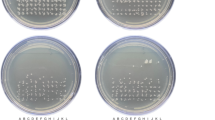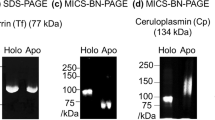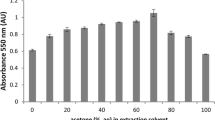Abstract
A CURIOUS phenomenon has been noted in recent work on the electrophoresis of sodium carrageenate. This polysaccharide occurs in the red seaweed, Chondrus crispus, and is composed mainly of d-galactose sulphate units linked in the 1–3 positions. Cations associated with the sulphate can become ionized to make the molecule a polyelectrolyte.
This is a preview of subscription content, access via your institution
Access options
Subscribe to this journal
Receive 51 print issues and online access
$199.00 per year
only $3.90 per issue
Buy this article
- Purchase on Springer Link
- Instant access to full article PDF
Prices may be subject to local taxes which are calculated during checkout
Similar content being viewed by others
References
Cook, W. H., Rose, R. C., and Colvin, J. R., Biochim. et Biophys. Acta, 8, 595 (1952).
Author information
Authors and Affiliations
Rights and permissions
About this article
Cite this article
GORING, D. Electrophoresis and Gel Strength. Nature 173, 734–735 (1954). https://doi.org/10.1038/173734b0
Issue Date:
DOI: https://doi.org/10.1038/173734b0
Comments
By submitting a comment you agree to abide by our Terms and Community Guidelines. If you find something abusive or that does not comply with our terms or guidelines please flag it as inappropriate.



